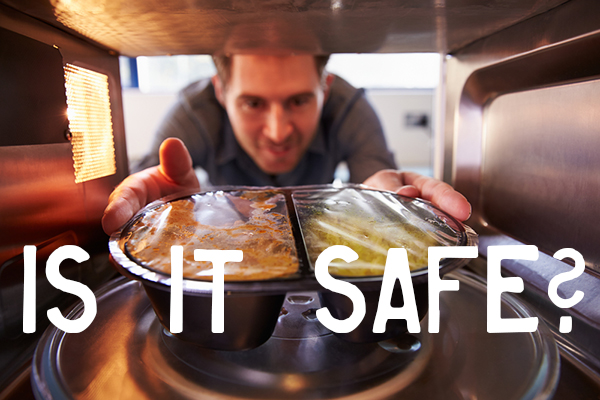More than 90 percent of Americans have a microwave primarily to reheat leftovers and coffee. Yet a growing legion of eco-lovers want no part of the convenient device. The microwave oven may be falling out of fashion. Perhaps the internet is to blame.
Article after article claims microwave ovens leak radiation, and since high levels of direct radiation cause DNA damage and cancer, then microwave ovens cannot possibly be safe. Except that’s not true.
Microwaves are a form of electromagnetic radiation, something like radio waves, that make water molecules in food vibrate, producing heat that cooks the food. Microwave ovens leak no more radiation than a cellphone, laptop computer, or an airplane flight. The Food and Drug Administration enforces strict standards for the amount of radiation that is allowed to leak. Consumer Reports says the vast majority of microwave ovens show very little leakage of radiation. And the level of exposure drops dramatically as you move away from the oven.
But because the risks of long-term exposure to low-level radiation emissions is unknown, to be absolutely safe, avoid all electronic contraptions. (Yeah right.)
WHAT ABOUT NUTRITION?
Also popular on the ‘net is that microwave cooking kills the nutrients in food. In an often cited study, microwaved broccoli lost some of its nutrients (but then too much water used in cooking was likely to blame). It’s a fact that cooking by any means changes the chemistry of food. Cooking reduces some nutrients, just as it increases the bio-availability of others. Most studies show that microwave cooking does a better job of preserving nutrients in food compared to other methods.
Still, some question remains as to whether microwaving alters protein chemistry. In a 1992 Stanford Medical School study, researchers reported a “marked decrease” in immune-boosting factors in microwaved breast milk. Additionally, baby bottles should not be microwaved because liquids heat unevenly, and all thin liquids can “superheat” past the point of boiling to produce a violent eruption of boiling liquid that can cause scalding burns. To be absolutely safe, be careful with liquids and think twice about microwaving food for infants.
WHICH CONTAINERS ARE MICROWAVE SAFE?
Where there is harm in microwaving food is the container type. Don’t ever nuke food in a plastic container, except those labeled “microwave-safe.” A never heat food in foam trays or takeout containers because they melt and cause chemicals—like the plasticizers that make the containers flexible—to migrate into the food. It’s best to only use glass, ceramic, and paper (wax paper, parchment paper, or white paper towels) are microwave-safe. Metal pans, aluminum foil and metal twist ties are also out because they can damage the oven itself.
NUKE-FREE MILLENIALS
Despite plenty of evidence that microwaves aren’t really harmful, microwave oven sales have declined sharply since 2004. Is fear alone enough to explain it? Marketers don’t think so. During the same period, the sales of slow cookers, crock pots, griddles, and rice cookers surged, which led marketers to conclude that microwave haters simply want to cook. It seems that, in general, millennials miss the warm and fuzzy feelings that come with home cooking. Apparently, convenience be damned! Reheating food in a double burner or conventional oven has more soul.
Also Read:
2024’s Biggest Food Trends You Can Expect to Devour
Millennials Support Holistic Wellness More Than Any Other Generation
The Nutrition of Raw vs. Cooked: Which Way is Healthier?
Quan R, Yang C, Rubinstein S, Lewiston NJ, Sunshine P, Stevenson DK, Kerner JA Jr. (1992), Effects of microwave radiation on anti-infective factors in human milk. Pediatrics, 89 (4 Pt 1): 667-9.
Vallejo, F., Tomás-Barberán, F. and García-Viguera, C. (2003), Phenolic compound contents in edible parts of broccoli inflorescences after domestic cooking. J. Sci. Food Agric., 83: 1511–1516.

